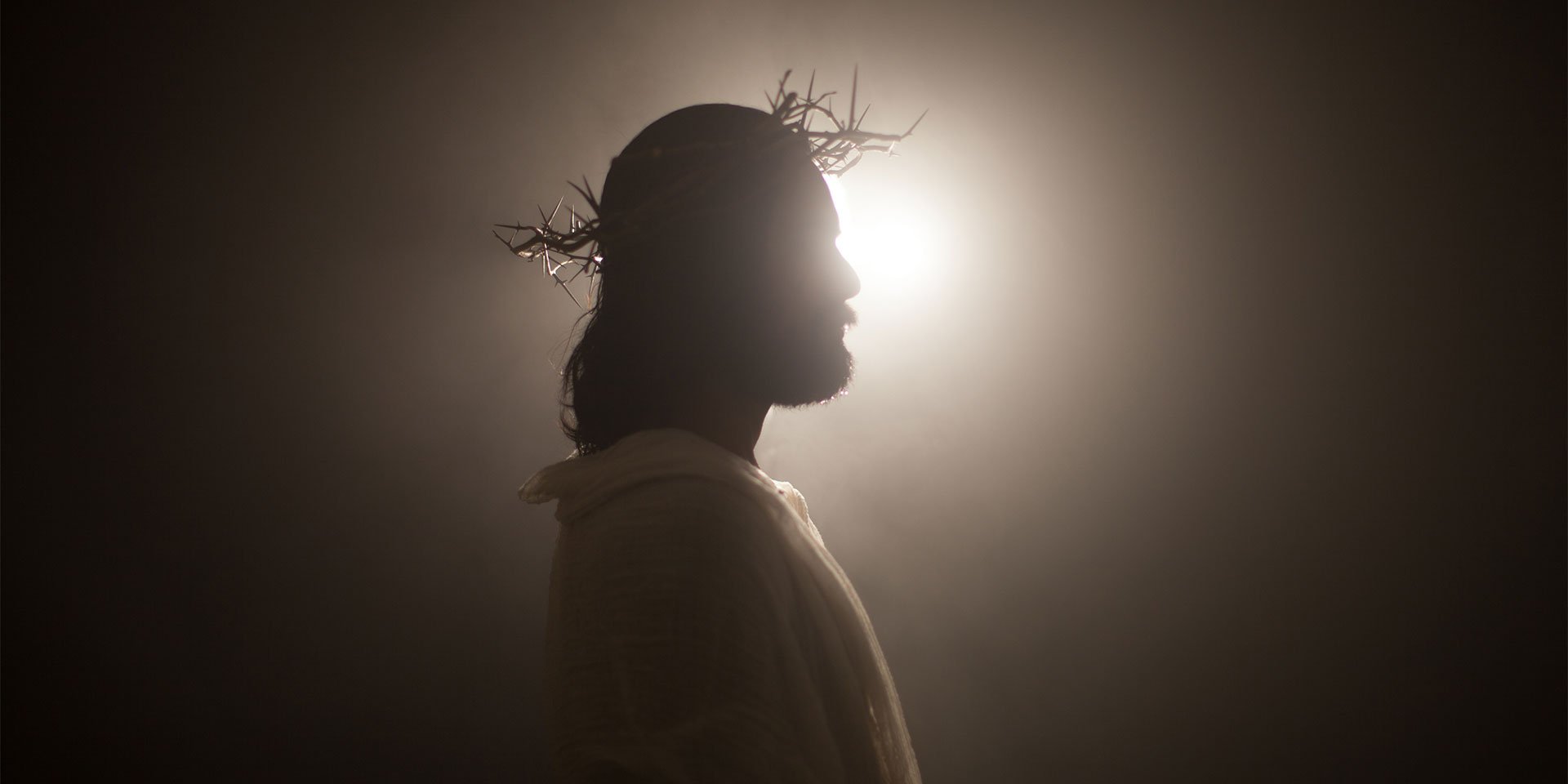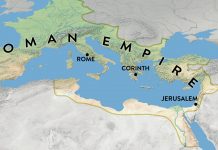The veneration of saints is a very old tradition in Christianity. Many Christians cannot imagine their religion without appealing to saints for guidance, protection, healing and intercession[1]. Less concerned with theological correctness, people seek the company of saints out of loneliness, hardship, sickness, fear, guilt, or disappointment.
Historically speaking, worship dedicated to persons other than God has always aroused confusion, controversy, and indignation. For this reason, the doctrine of the saints is today often explained rather apologetically. But these post factum justifications offered by the Church Fathers of the last third of the 4th century AD (Basil the Great, Asterius of Amasea, John Chrysostom, etc.) are inconclusive (at best they can show why the worship was practised at the time of the argument). The Church Fathers we have mentioned inherited a tradition from previous generations, which they tried to argue as honourably as possible[2]. However, in order to argue the necessity of the cult, it would be necessary to look at the previous, determining motivations (the causes, not the effects and their interpretations).
A brief history of the cult of saints
The Belgian Hippolyte Delehaye (1859-1941), the greatest specialist in the field of hagiography, rightly observed that the first Christians did not feel admiration at the time of the martyrdom of their brothers, but rather shock, stupefaction, and terror[3]. The disciples well remembered Jesus’s warning about persecution, but no passage in the New Testament suggests the existence of a possible cult of saints in the apostolic age, on the contrary (Acts 10:26; 14:15; James 5:17; Revelation 19:10).
Martyrdom became proof that a world without Christ would wallow in darkness and violence.
Post-apostolic writers, on the other hand, write enthusiastically about martyrdom. They describe the passion of being martyred (Ignatius of Antioch) and believe that Christ’s presence in the martyr’s suffering makes the agony bearable and death desirable (Tertullian).
Later, in the 3rd century, the need arose for the intercession of a third party between God and human beings. The instrumentalisation of martyrdom emerged at the same time as another great problem in the life of the Church: the apostasy of a considerable number of Christians[4]. And these apostates (lapsi in Latin) no longer had the courage to turn directly to God because of the guilt of having denied Christ (Mark 8:38; 2 Timothy 2:12). This feeling was intensified by rigorists such as Tertullian, Novatian, Meletius of Lycopolis, and Donatus, who held that the rehabilitation of apostates was impossible[5].
Therefore, those who had rejected Christ turned to confessors (survivors of torture for Christ or Christians awaiting execution) for forgiveness. Initially, the Church recognised their ability to forgive as a charism offered by the Holy Spirit, based on the idea that Jesus Christ was present in those who suffered for Him. This solution seemed viable to bishops such as Dionysius of Alexandria and Eusebius of Caesarea,[6] but there were also those who warned that the recognition of this capacity was an exaggeration, since this power belonged to God alone (Tertullian)[7].
After all, acknowledging the power of such a person could only corrupt. Cyprian of Carthage (bishop between 248 and 258) observed that in his diocese there were confessors who were only interested in fame and material gain and who were doing a disservice to Christianity with their unworthy behaviour. He forbade them to continue their activities and offered ecclesiastical discipline as a solution for the recovery of apostates.
According to Cyprian’s doctrine, the bishop was the only one in a position and the only one able to distribute forgiveness. To ensure that the bishop’s authority was not merely personal, it was based on laws (canons) drawn up in episcopal assemblies.
St Cyprian’s solution was soon accepted by the majority of episcopal sees. The problem with church discipline was that it did not offer complete rehabilitation. Apostates, though reinstated, were never allowed to become clerics again. They remained stigmatised for life[8]. A Synod of Ancyra in 314 decreed that even priests who had apostatised but then returned and boldly professed faith in Christ could no longer hold priestly positions. A telling example of the inability of Church discipline to soothe consciences or regain the recognition of co-religionists is the story of the apostate Serapion, a Christian of Alexandria (3rd century), who lived in shame and died in guilt, although he often prayed and wept for it[9].
In the third century, the Roman Empire was in crisis, Christians were persecuted, the rehabilitation of apostates was questioned by the rigorists, and the canons lacked sufficient authority to assuage guilt and the fear of eternal punishment. In this context, visits to the tombs of the martyrs were no longer just expressions of affection for the dead. Inspired and influenced by the cult of family heroes and deities—many martyrs’ bodies were buried in family tombs[10]—people began to ask martyrs to intercede for them[11]. The cult of the martyrs gradually developed and, beyond the circle of apostates, was adopted by other disadvantaged groups (slaves, widows, orphans, the sick, etc.) The promise of a patronage that offered guarantees of forgiveness, healing, and security was accepted by many Christians—the extent of pilgrimages to the tombs of the martyrs demonstrates this[12]. Eventually, from the second half of the 4th century, the church hierarchy gave in and not only formalised the cult, but contributed significantly to its development. The impact of this new cult on Christianity was so profound that historians speak of the emergence of a second church from the second half of the 3rd century[13]. The process would intensify in the following century.
In the 4th century, extensive campaigns were undertaken to search for, excavate, inventory and valorise relics. The cult of the martyrs increased superstition, introduced fraud, and encouraged credulity[14].
After the end of the age of persecution in 313, the cult of saints was enriched by the veneration of ascetics. They tried to artificially and deliberately create tortures like those imposed by the pagans in the past. Ascetics began to be venerated because they practised “spiritual martyrdom”. The arguments for the cult of the martyrs were thus applied to this new category of saints[15]. From the 5th century, the public cult of the Virgin Mary developed. The Third Ecumenical Council of Ephesus (431) provided the dogmatic basis.
It was not until the 7th Ecumenical Council of Nicaea (787) that the cult of the saints was formalised and generalised in the Christian Church. Until then, the cult was local, dependent on relics and optional (as evidenced by the conflicts in the 8th century between those who venerated saints and iconoclasts and those who refused to venerate them). The elaboration of the dogma of the icon at the 7th Ecumenical Council definitively imposed the cult of the saints, because the icon was considered to make the presence of the saint possible.
The most important consequence of the cult of the saints is the imposition of a spiritual patronage that affects the direct relationship of man with God. People are no longer exposed to the holiness of God, which urges them to love their fellow human beings and to practice social justice. The Middle Ages demonstrated, both in the West and in the Christian East, that a piety in which we do not encounter God directly is abusive.
The Protestant Reformation (15th century) challenged the cult of the saints and insisted that only a relationship with God could be salvific. Interestingly, those who accepted the reformist ideas were persecuted like the early Christians, and many became martyrs. Foxe’s Book of Martyrs, the most widely read book of the 15th century, recounts the sufferings of these Christians, but without suggesting the need for a cult for them. This was because Protestants had found the direct way to God.
Today, when people feel increasingly lonely, when we are exposed to more and more temptations, there is a tendency to feel increasingly unworthy and insecure, and the cult of the saints promises many solutions to these problems. However, in light of the history summarised above, and in the absence of favourable biblical arguments, how safe can this solution still be considered?
An unloving God?
As its history shows, the cult of the saints is rooted in a distrust of the greatness of God’s love. St John Damascene, for example, draws an analogy between the earthly emperor and God. In both cases, he says, “advocates” and “protectors” are needed to intercede on behalf of the faithful[16]. In other words, God will be merciful if His friends, the saints, pray to Him. This suggests that God has two standards: one for the saints and another for ordinary people. Only those with sufficient merit would be the object of divine love, while the rest depend on the saints’ ability to negotiate with a God who seems arbitrary, unpredictable, burdensome, and disappointing.
The Bible, however, is not silent on this subject, but gives us a completely different perspective on God: He loves with an abundant love (Deuteronomy 32:9-10; Zechariah 2:8), down to the last drop of hope that a sinner can be saved (Matthew 12:20-21). God so loved the world that He gave His most precious gift, His Son, so that the world might be saved through Him (John 3:16). In His love, the righteous God considers holy (justifies) everyone who believes in Jesus (Romans 3:26), and this is not a privileged state reserved for the exceptional, but a favour offered to all through the sacrifice and intercession of Jesus Christ.
An incomplete sacrifice?
According to the cult of the saints, when Christ will judge the world, the saints, and especially the Virgin Mary, will intercede for ordinary people. The hope and promise, which has not the slightest support in the Bible, is that the Just Judge, for the sake of His Mother and the other saints, will also take pity on some of those who are considered unworthy—another apocatastasis[17], this time caused by God’s weakness for the saints. In Origen we also find the idea that martyrs serve at the altar in heaven to obtain forgiveness of sins for those who pray (the blood of the martyrs will redeem some)[18].
Unfortunately, to admit such interference in God’s initiative for our salvation is to believe that there is someone else who has a greater desire to save us than Jesus Christ, and also to believe that Jesus’s sacrifice was not complete.
The reason for intercession with a God who is supremely good
Jesus is not an intercessor, begging the Father for mercy for those He represents. Nor would it be necessary, for the Father Himself desires the salvation of mankind (John 3:16; 16:26-27). Christ stands at the right hand of the Father as the One who triumphed on the cross and is now reaping the fruits of His victory.
Jesus is the argument that Satan cannot contradict, through which God’s justice and mercy are united.
When a person prays to God in the name of Jesus Christ, the holiness of Jesus is the reason why the prayers can be heard. The Father is pleased to receive the merits of the Son’s sacrifice for the salvation of mankind. This is the highest form of intercession and the only one necessary for our salvation. No saint, not even the Mother of God, can do it, because this work is linked to Calvary.
If they could, the saints would stop us.
Father Dumitru Stăniloae believes that the saints are aware that people praise them for the glory and holiness of God and that is why they “remain in a state of supreme humility”. He believes the saints do not see their glory and holiness, and when it is attributed to them, they do not accept it. They make a distinction between themselves and the glory of God; they do not consider holiness to be theirs. “Therefore, their praise in the Church is only possible because they cannot prevent us from doing so, because they are not visibly present… But the fact that they do not want us to honour and praise them does not mean that we should not do so”[19]. In other words, the Church imposes the veneration of the saints beyond what it considers to be the saints’ will. In the Orthodox paradigm, the refusal of the saints to be venerated is not modesty or false humility, but is based on heavenly realities.



















